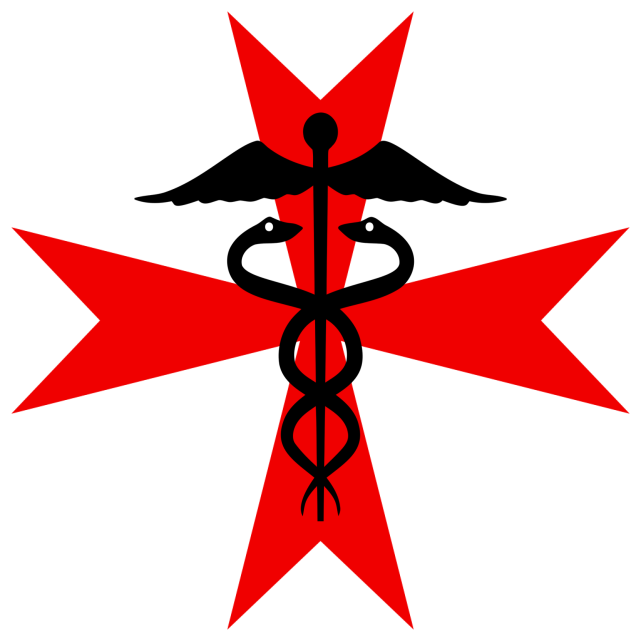How did you ever live without it? The Cornerstone CPR Blog! Your source for photos of CPR classes, and captions describing them.
Will sparring with a CPR student at a boxing gym. The smart money’s on Will’s opponent.
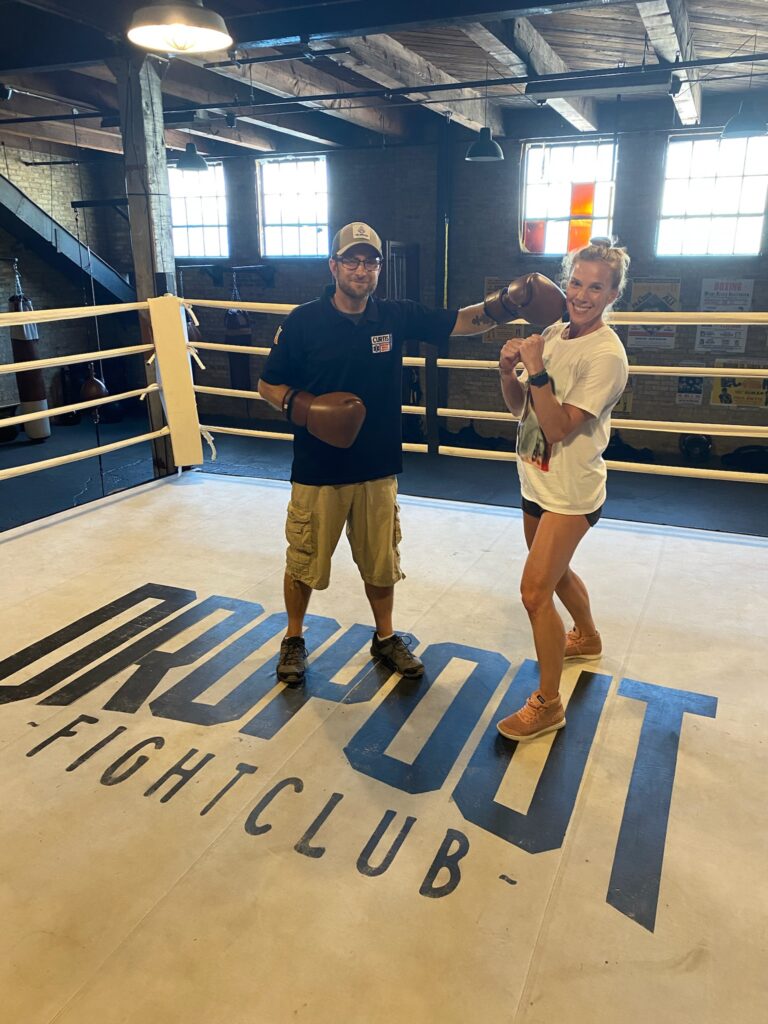
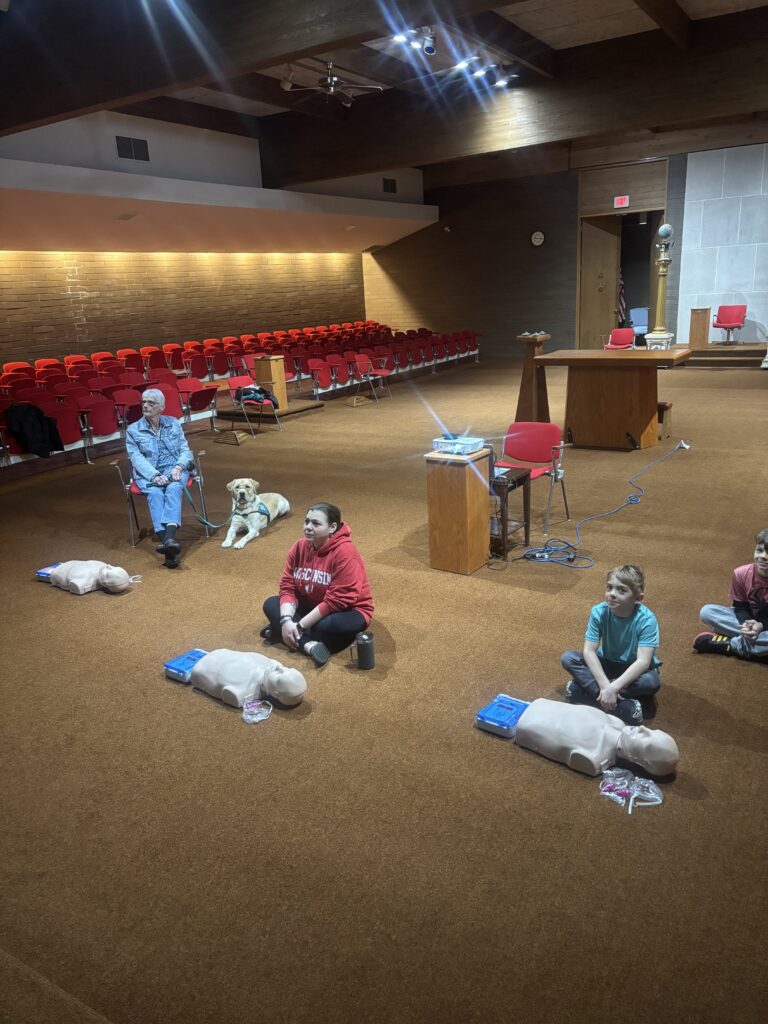
A CPR class given for the Order of the Eastern Star, a Masonic women’s group.
The youngsters are aware that they are being photographed. The adults are so utterly engrossed in the American Heart Association’s training materials that they have not noticed the man with the smartphone.
The dog is just glad to be here, frankly.
Students watch a video showing how to give CPR.
The dog is taking things as they come.
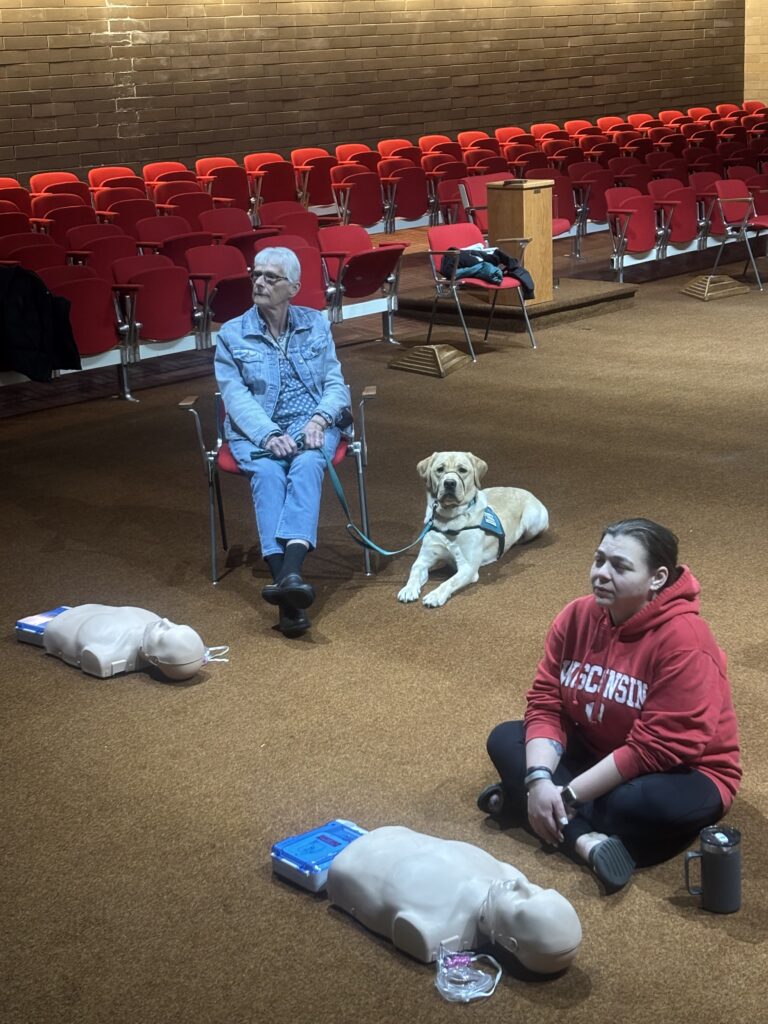
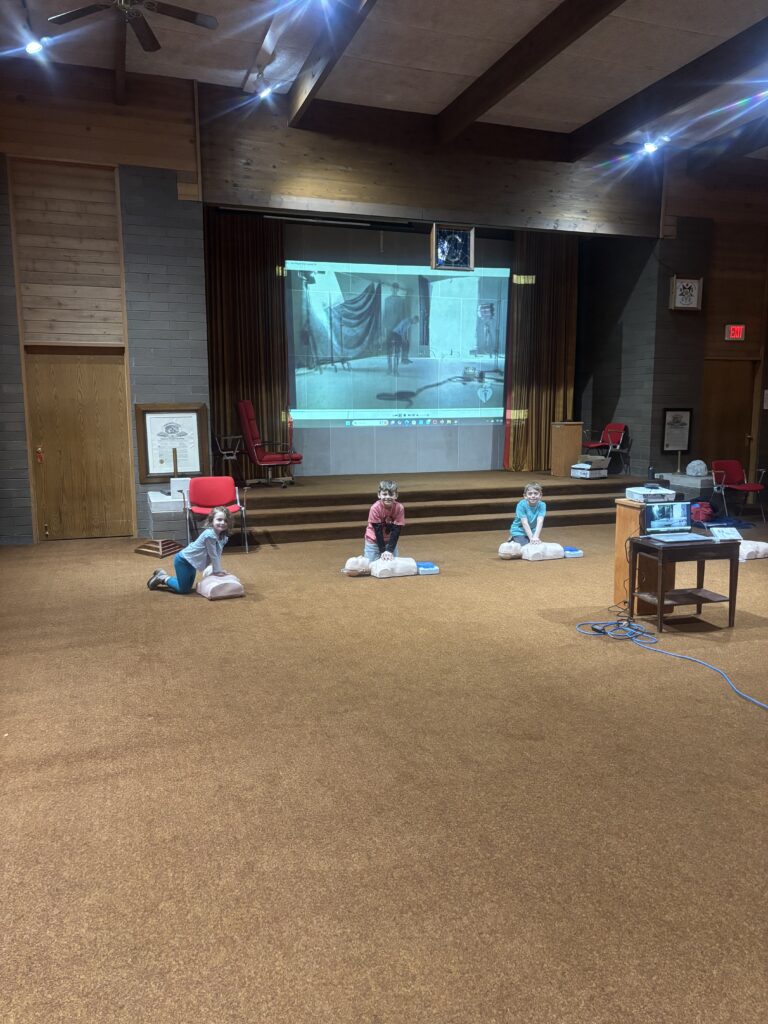
At this CPR class, three children were among the students. Children can learn how to give CPR and First Aid as soon as they are able to understand the instructions and follow the directions.
Two of the youngsters, posing for a photo.
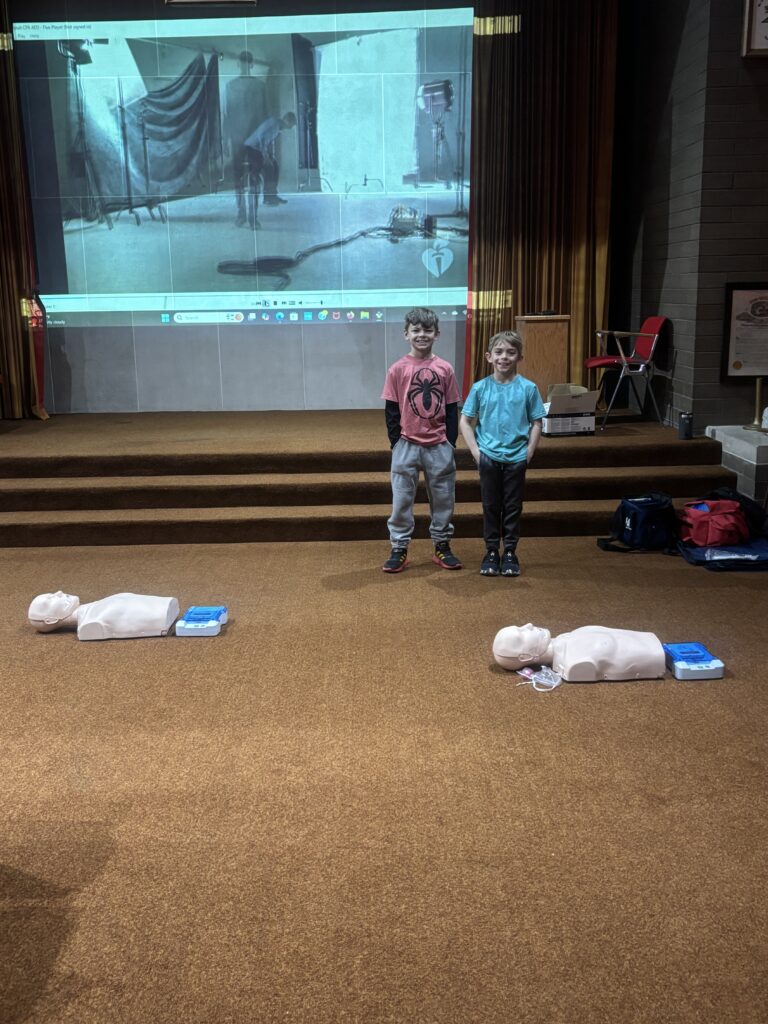
In this video, one student gives respirations (mouth-to-mouth), while another student gives chest compressions. Here, the student giving respirations is using a mask with a mouthpiece, which protects against the transmission of disease. In an emergency situation, sometimes using mouth-to-mouth will be unavoidable.
Since the COVID-19 pandemic, learning mouth-to-mouth has been optional in CPR and First Aid classes offered by the American Heart Association.
Will, ensuring that there are no technological snafus to contend with. This photo and the following three photos are from a CPR class held at a daycare. This is why the participants especially needed instruction on CPR and first aid for children and infants.
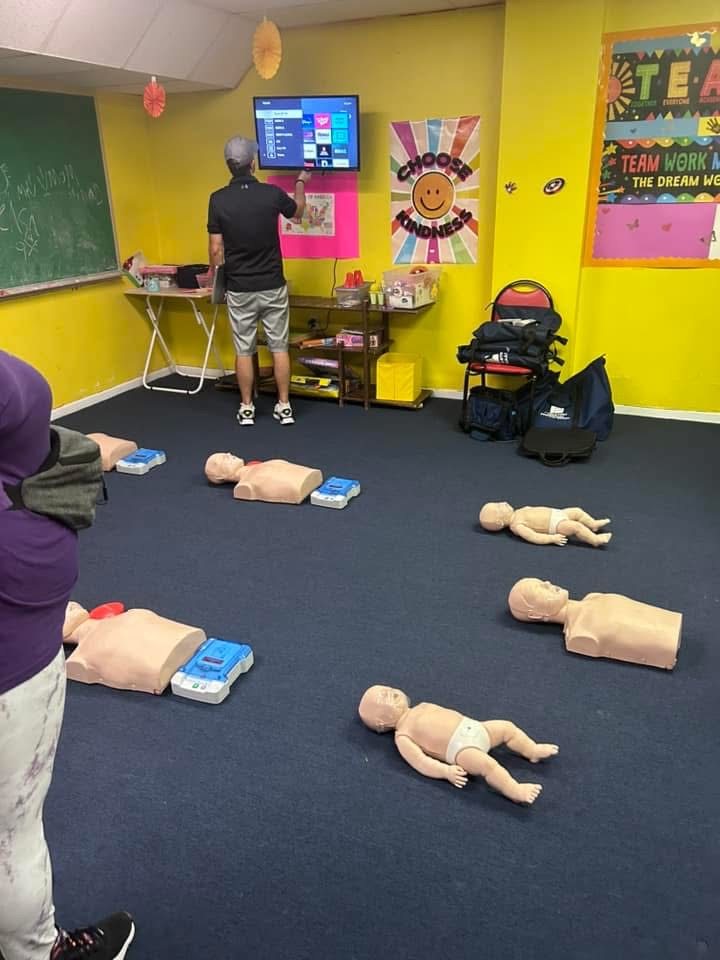
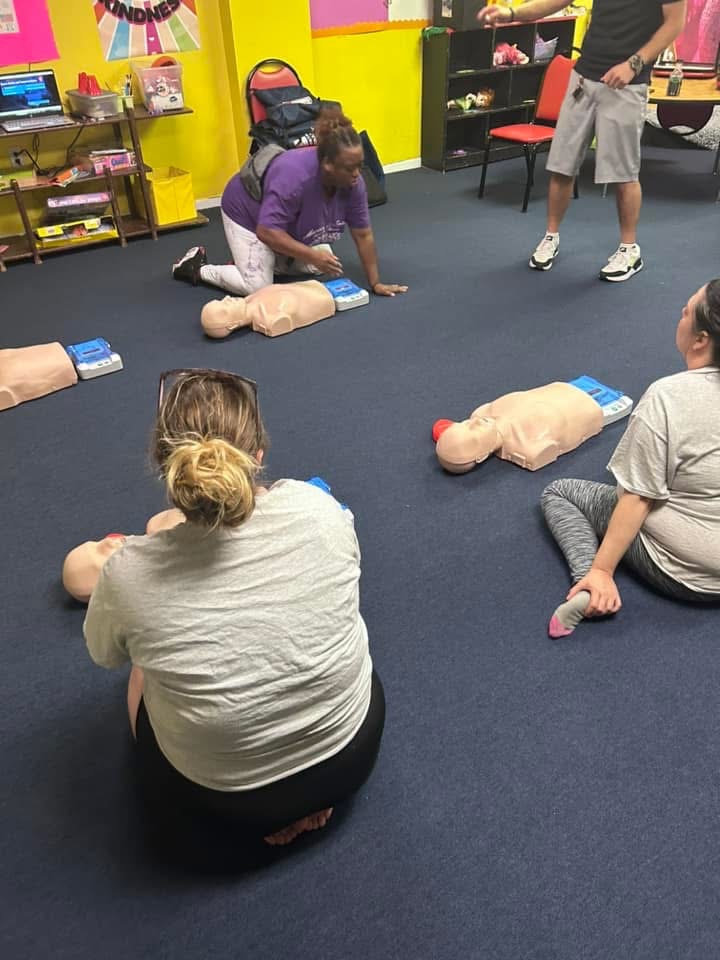
Students get into position to learn how to perform CPR with an AED (automated external defibrillator). An AED detects heart activity and recommends shocking the heart if it finds electrical activity inadequate to pump blood (known as fibrillations). Giving CPR with an AED dramatically increases the likelihood that a patient in cardiac arrest will survive.
A student gives CPR to a CPR doll. CPR dolls are designed to give students feedback related to the correct rate and depth of chest compressions, so that those learning CPR for the first time can get a good feel for what they will have to do when they give CPR in reality.
The CPR doll is hooked up to a practice AED (automated external defibrillator).
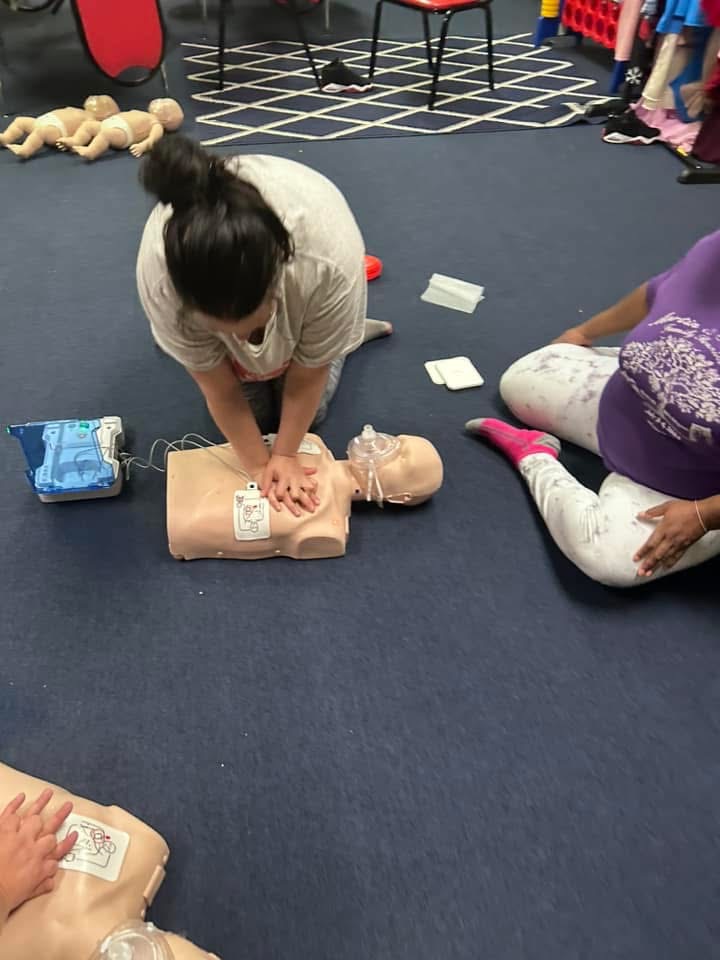
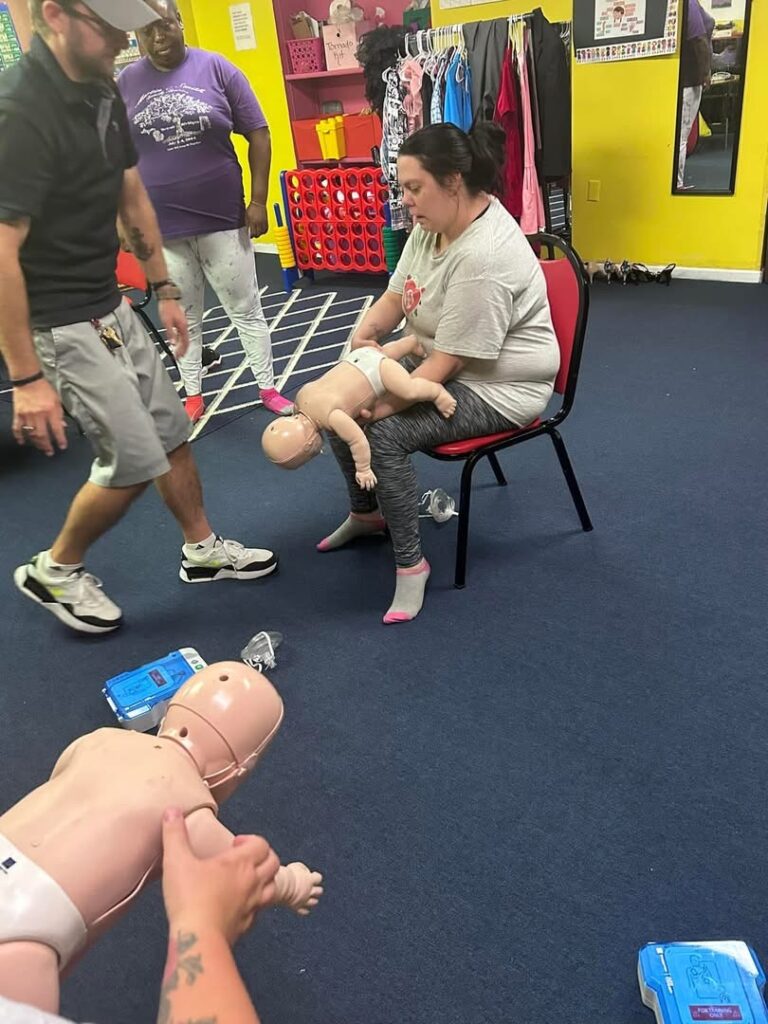
Will to the left, assisting as a student performs the Heimlich manoeuvre on an infant-sized CPR mannequin. The Heimlich manoeuvre, which dislodges solid objects blocking the airway in a choking patient, is performed differently on an infant than on an adult or child.
